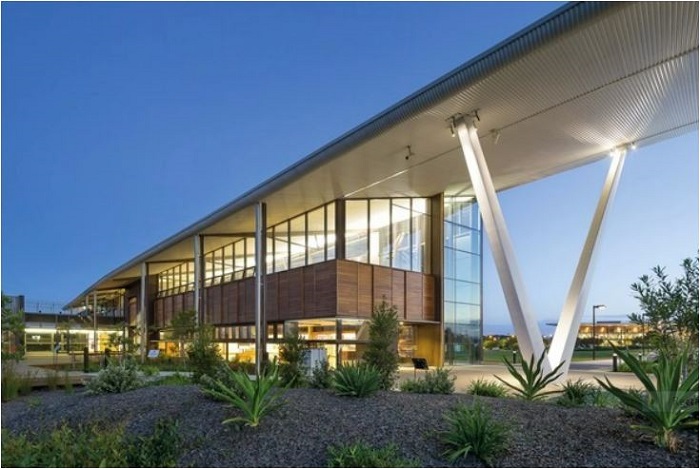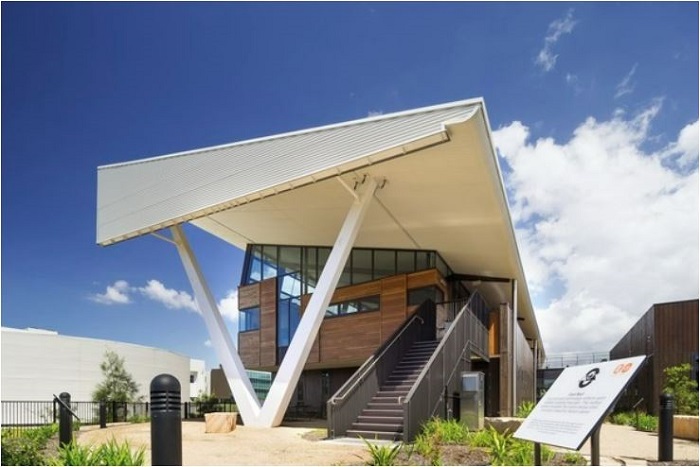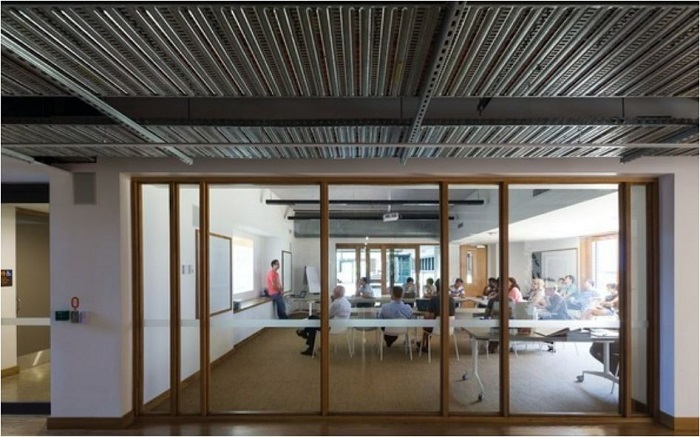A new report by COX Architecture reveals important insights on the performance of the Sustainable Buildings Research Centre (SBRC) after 10 years of standing as a beacon of innovation and sustainability on the University of Wollongong campus.
Designed by COX, the SBRC is Australia’s most sustainable building, being the first – and still the only – building in Australia to achieve Living Building Challenge (LBC) accreditation, a testament to its dedication to pushing the boundaries of regenerative building practices while establishing its role as a trailblazer in sustainable architecture.

“Humanity is using more resources and creates more pollution than earth can sustain – Living Building is trying to address this by creating buildings that repair and restore, and not only ‘do less bad’, but have positive impacts,” observes Dr Matthias Irger, head of sustainability at COX.
“The SBRC is exemplary in integrating nature and using passive design principles to reduce energy, integrate daylight, using thermal mass very effectively and, therefore, creating a very low energy demand,” he adds.
Housing the university’s built environment sustainability research unit, the building is a structure that lives by its work – delivering evidence-based research into sustainability for Australia’s built environment.
Designed to be a research hub as well as a research subject, the SBRC prototypes a range of sustainable building technologies, designs and materials, with the fabric of the building being used for integrated research.

Ten years on, COX embarked on a journey to evaluate the impact of its regenerative strategies, both on the environment and the building’s occupants. This impact study aimed to glean valuable insights for future building projects aspiring to attain LBC accreditation, and those projects looking to do less harm.
The research paper SBRC 10-year anniversary – what have we learned? utilised energy and water analysis, post-occupancy evaluation (POE), and semi-structured interviews to assess various facets of the building’s performance over a decade. The POE, conducted in collaboration with the University of Technology Sydney (UTS), leveraged the Building Occupants Survey System Australia (BOSSA) to gauge occupants' satisfaction with the indoor environmental quality (IEQ)
The results of the evaluation reveal a resounding success story. The SBRC continues to outperform benchmark averages for office buildings, setting new standards for sustainability in the built environment, and fostering a conducive environment for occupants, promoting their health and wellbeing.
Key findings:
Carbon reduction: Carbon emissions are lowered via sustainable materials, reduced energy/water use, and rainwater harvesting.
Water efficiency: Rainwater harvesting and on-site treatment ensures efficient water use.
Passive design: Through smart shading and natural lighting, the building ensures comfortable indoor temperatures without heavy reliance on HVAC systems.
Occupant wellbeing: Passive design boosts comfort, satisfaction, and health by providing quality indoor conditions and a sense of community.
Indoor quality: SBRC exceeds office building standards in comfort, air quality, and connection to the outdoors.
Recycled materials: Visually striking recycled materials give SBRC a unique, timeless look.
LBC accreditation: Achieving the Materials Petal involved collaboration to replace harmful materials.
Future-proofing: With energy demand surpassing generation, SBRC plans to expand its PV system to maintain carbon negativity.

Beyond its immediate impact, the SBRC serves as a catalyst for change, inspiring a diverse community of visitors, students, collaborators, and research partners from around the globe. By championing sustainable practices and pushing the boundaries of innovation, the SBRC leaves an indelible mark on the future of architecture and engineering.
“We like to think of the SBRC as the Kathrine Switzer of runners, she was the first woman to run the Boston marathon and since then millions of women have done it. This building is that person, it enables the pathways for other buildings to follow,” says Laura Hamilton-O’Hara, CEO – Living Future Institute Australia.
Images: John Gollings Photography

